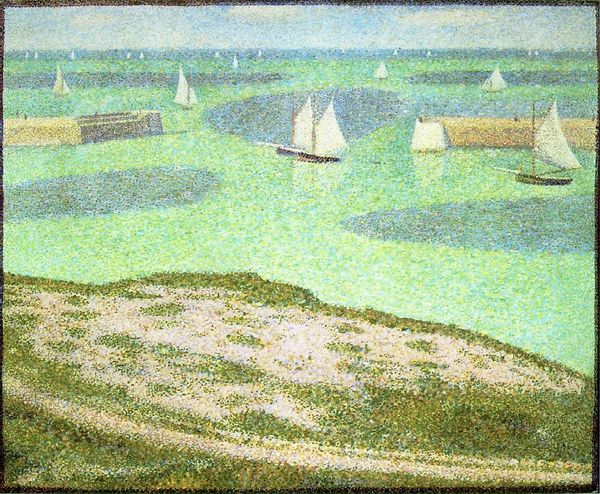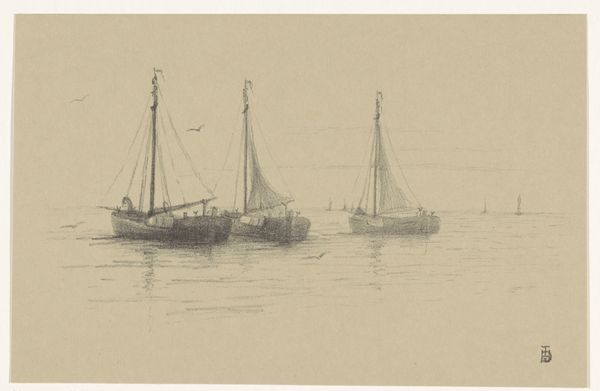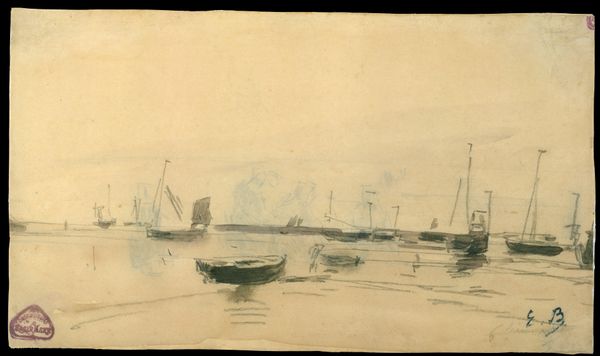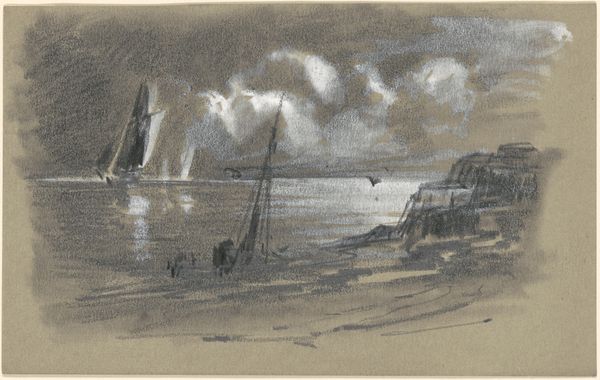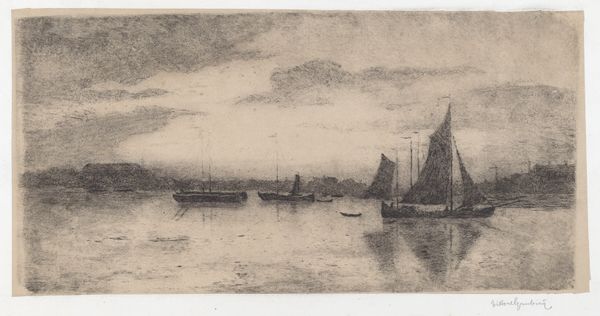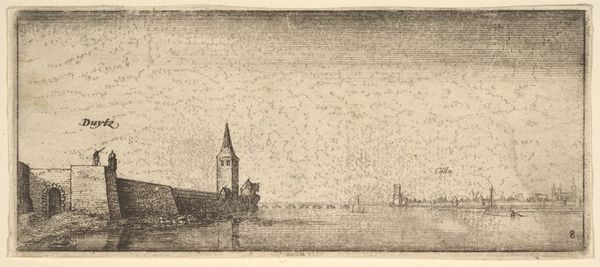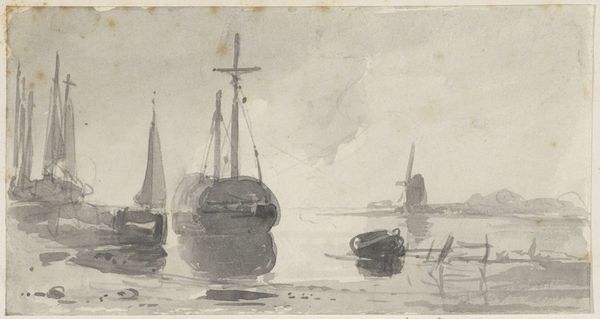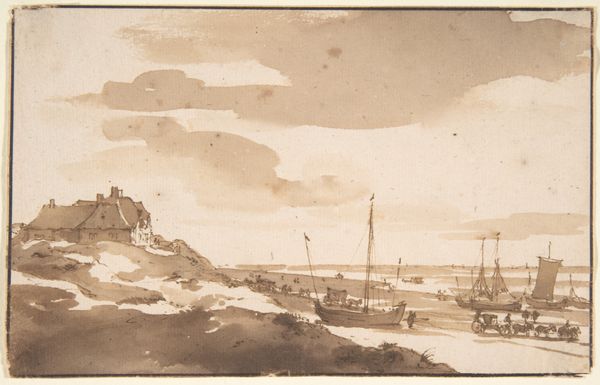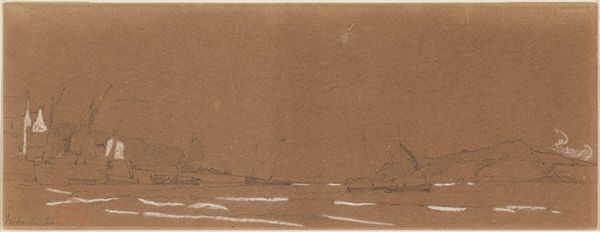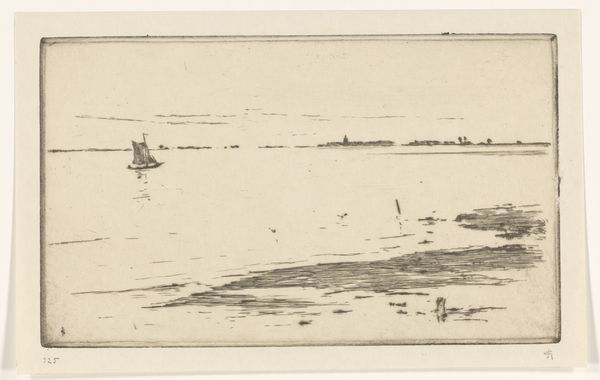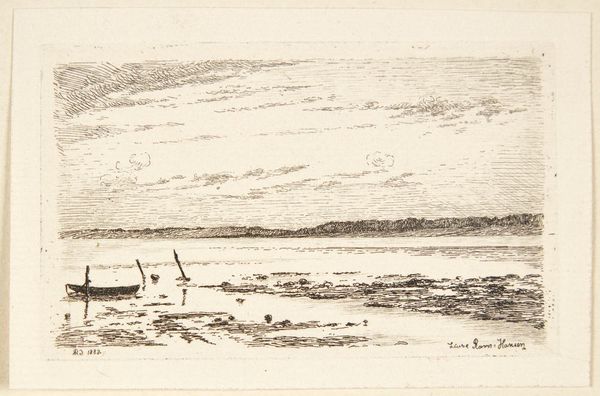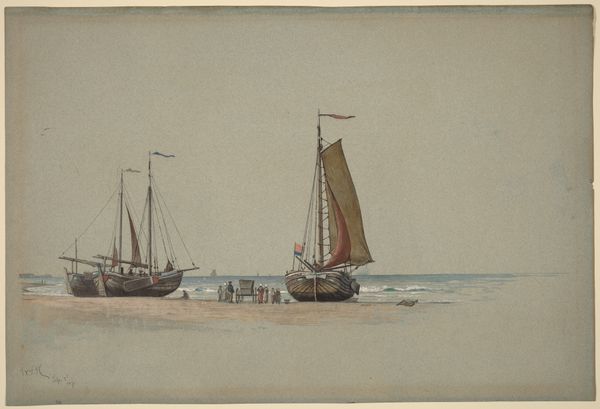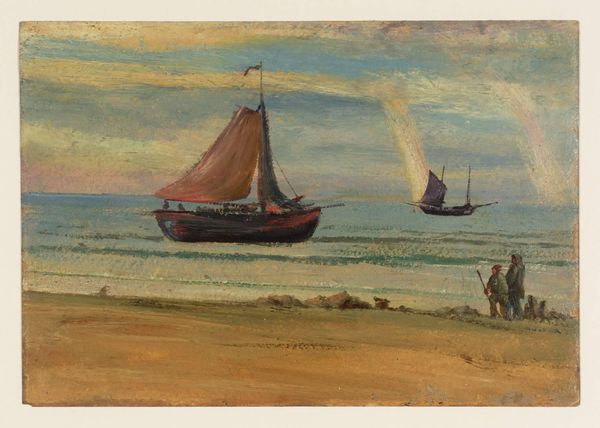
painting, oil-paint, impasto
#
painting
#
oil-paint
#
neo-impressionism
#
landscape
#
impasto
#
geometric
#
post-impressionism
Copyright: Public Domain: Artvee
Georges Seurat’s “The Channel at Gravelines, Evening,” is made from countless tiny touches of oil paint, applied to canvas. This laborious technique, called pointillism, involved building up the image dot by dot, relying on the viewer’s eye to blend the colors. Seurat wasn't just interested in capturing a scene; he was exploring a very scientific approach to painting. The method allowed him to create shimmering effects of light and color, almost as if the scene is vibrating before your eyes. Each dab of paint is a deliberate act, reflecting hours of patient labor. But let’s consider the social context. This painting was made during a time of great industrial change. The repetitive, almost mechanical application of paint could be seen as a reflection of the era's increasing industrialization. Seurat elevates the status of the working class to craft a technique that, in effect, automated painting. By understanding the labor-intensive process and the broader context, we can begin to appreciate the piece beyond its surface beauty.
Comments
No comments
Be the first to comment and join the conversation on the ultimate creative platform.
